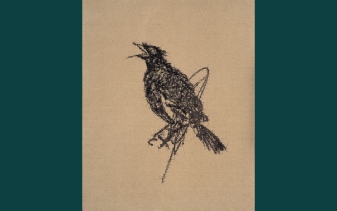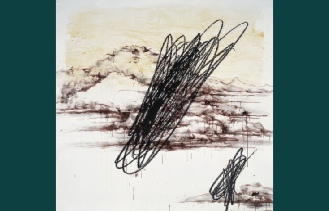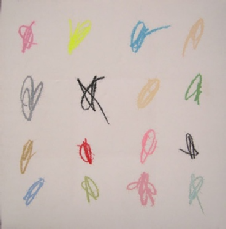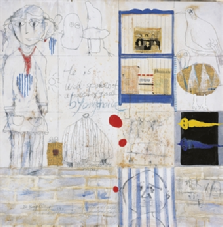






Josep Soler i Casanellas

Ye Yongqing
Ye Yongqing (叶青 Born in 1958 in KunMing, Yunna Province) is a pioneering artist who was part of the Sichuan School of artists. He has spent much of his career painting portraits of birds, one with jagged, clever lines. He also has focused in recent years on creating colorful collages. Currently the 1st president and artistic director of China Contemporary Art Institute of China Academy of Art founded in 2010.
I admit, I do not know before, his work on the Gathering are the most traditional, and I change now when I see them closely, I must say that the cranes are incredible, the set of strokes and drops of varying intensity are marvelous and ink red and green gives an incredible force. They appreciated the difficulty of working with ink. I confess that it is the one that most attracts me to see their current work completely away from traditionalism and closer to Basquiat trying to explain a lot of things in a piece of paper or canvas. Trying to motivate the viewer to think about. In addition to reading an article by Lü Peng, he is the one who has made a very strong intellectual activity and certainly the most unfortunate with the success. Surely he has more technical skills in the use of ink among the other artists; his other works are also exceptional.
Ye Yongqing’s “birds” have had a long history, going through its own spiritual development. They were conceived during China’s “Ideological Emancipation Movement”, which endowed them with romance and sentiment in preparation for their spiritual development. The birds were born in an age of social unrest and confusion, when it was showered with an evolutionary storm of ideology and perception, which also made it timeless and adaptive to any environment. Later, the birds matured in the process of globalization, making them aware of the distracting thoughts and the dust of individualism at its heart. At the end, the birds finally realized that they were nothing -


 C.V.
C.V.



Other and former works: